Duff Wilson and the Creedmoor Accusation
Imagine you are the world's most powerful newspaper and you have invested your credibility in yet another story line that is falling apart, crumbling as inexorably as Jayson Blair's fabrications and the flawed reporting on Saddam Hussein's supposed WMD. What to do?.If you're the New York Times and the story is the alleged gang rape of a black woman by three white Duke lacrosse players—a claim shown by mounting evidence to be almost certainly fraudulent—you tone down your rhetoric while doing your utmost to prop up a case that's been almost wholly driven by prosecutorial and police misconduct..And by bad journalism. Worse, perhaps, than the other recent Times embarrassments. The Times still seems bent on advancing its race-sex-class ideological agenda, even at the cost of ruining the lives of three young men who it has reason to know are very probably innocent. This at a time when many other true believers in the rape charge, such as feminist law professor Susan Estrich, have at last seen through the prosecution's fog of lies and distortions..The Times took its stand in a 5,600-word, Page One reassessment of the case on Aug. 25, written by Duff Wilson, a sportswriter responsible for much of the paper's previous one-sided coverage, and Jonathan Glater. The headline was "Files From Duke Rape Case Give Details But No Answers.".
Like the headline, the piece cultivates a meretricious appearance of balance. But its flaws are so glaring that it was shredded by bloggers within hours after it hit my doorstep. They were led by a Durham group called Liestoppers and by KC Johnson, an obscure but brilliant New York City history professor of centrist political views. Johnson alone has produced more insightful (if sometimes one-sided) analysis and commentary on the Duke case—about 60,000 words—than all the nation's newspapers combined..
The Wilson-Glater piece highlights every superficially incriminating piece of evidence in the case, selectively omits important exculpatory evidence, and reports hotly disputed statements by not-very-credible police officers and the mentally unstable accuser as if they were established facts. With comical credulity, it features as its centerpiece a leaked, transparently contrived, 33-page police sergeant's memo that seeks to paper over some of the most obvious holes in the prosecution's evidence.
“In hindsight, which is a hard thing to put aside, I’d have kept more to the tone of the June 12 piece. At the time we were trying to give sufficient prominence to what Duff had extracted with some difficulty — the evidence Nifong claimed justified his pursuit of this case — because that was actual new information.
At the same time we did not want to underplay the major holes in the case (which we itemized in considerable detail) and we did not want to treat our new material unskeptically, because there were serious questions about how reliable that evidence was — including a thinly veiled suggestion by the defense that it might have been fabricated. I think if you read the whole story you came away with a better understanding of what Nifong thought he had, but with continuing serious doubts about his case.”
The lawyers also sought to discredit her with the revelation, first reported in Essence magazine, that 10 years before, she reported another gang rape but failed to pursue the case.
The files in the Duke case throw some light on that case.
She had filed the complaint when she was 18, telling the police in Creedmoor, N.C., that four years earlier, her then-boyfriend and two of his friends had raped her when she was a runaway and helping them sell drugs.
She told the Durham police that a friend had encouraged her to report her secret so she could hold the men accountable and move on with her life.
The Creedmoor police say they have no further record of the case. Recently, the woman told Durham investigators that she had decided to drop the Creedmoor case after the police told her that it would be difficult to prove and that all the men were already imprisoned for other crimes. Records show that one of the men was declared a habitual felon in 1998. The Times could not trace the other two, who have common names.
4/28/06 - 0918 Called victim in reference to an earlier sexual assault that she reported at Creedmor police department. She stated that she was dating Floyd Taylor at the time. She stated that she had ran away from home on previous times and that she had been found hiding at Floyd Taylor’s house after the police came with a search warrant. She stated that she was used by Floyd to sell drugs and take the money to him. She stated that when Floyd was not there some men would come over, Larry James, Anthony James and Sean Umpstead. She stated that she would have sex with them when floyd was not around. She stated later that the men paid Floyd to come over and have sex with her. She stated that one day Floyd Taylor confronted the victim about the men that were coming over and having sex with her. She stated that she denied it to him and then he brought the three men to the house. She stated in front of her she asked them and they all said that they had been having sex with her. She stated that Floyd grabbed her and they went into the bedroom where she stated three men Mr. Taylor, Anthony James and Larry James “ran the train on her” she stated she was very scared. In her voice I could sense that she was becoming very emotional, she stated that she did tell some of her family members about it and that she went to duke hospital about a week after the incident. She stated that Mr. Floyd Taylor stated to her that no one would believe her and she stated that she didn’t think anyone would believe her since she had already had sex with them before. She stated that Floyd Taylor was very abusive and stated that if she ever told he would find her and that she was very afraid of him at the time. She stated years later she met her husband Mr. McNiel who she confided with about the incident. She stated he urged her to go report the incident so that she could have some closure and that she wont keep it a secret. She stated she reported it to the Creedmor police who did an investigation. She stated that she was told by the investigators that it would be a long process and that at her young age it would be mentally and physically tough and very hard on her. They told her that all three of the men were currently in jail and that were going to be in jail for a significant time. The victim stated that Mr. Taylor had been in jail for pushing his grandmother down the stairs which killed her. She stated that when she found out they were currently in jail, she thought she had closure due to the fact that she had let some one know what happened and that they were going to be in jail for a long time she felt satisfied and she did not pursue it further.





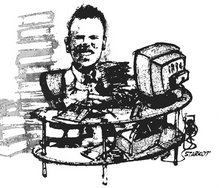
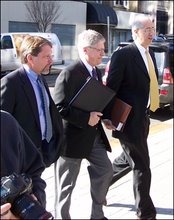
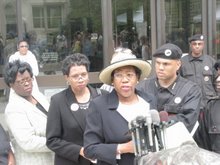
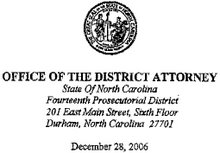
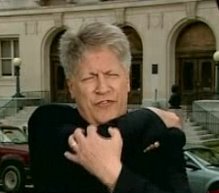




























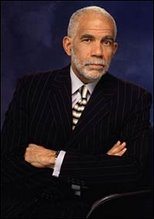







3 comments:
Wow, Crystal sure knows how to spin a yarn. Too bad it's false, just like the Duke case. Her father Travis says it false, her mom says it didn't happen when she was 14 but 17.
As for Duff he has been totally discredited as a reporter of facts.
Off topic--but for those who speculated that Nifong was dragging out his resignation to bolster his pension, only to find out the effectss of the additional time were minimal, what about his medical coverage. We had dozens of people leave our firm today and I asked someone why everyone chose today and was told that they would get medical coverage through the month by working today. Nifong was treated for cancer---what would his medical coverage choices be at this point?
The Duffer ;has been a liar from the get go. Yet, i see people quoting him as the source for condeming others. Whats goin on?
Post a Comment